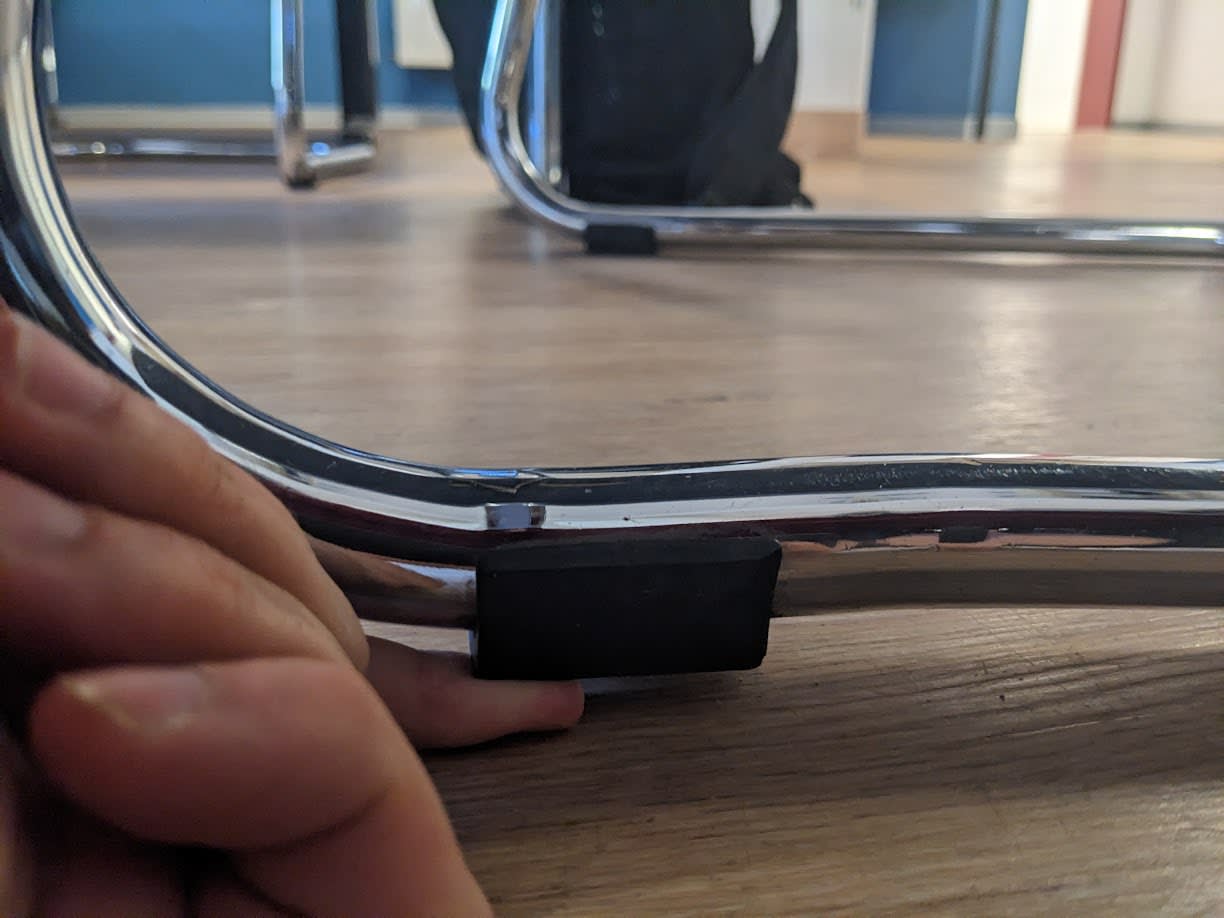It turns out the “wobbly table theorem” is less of just a math curiosity than I thought.
The “wobbly table theorem” essentially says that if you have a “table”[1] resting on a continuous surface, you can find a rotation where the table rests on all four legs[2]. I first encountered this years ago on Numberphile.
This investigation started with my frustration with the chair I am currently sitting on and me thinking that the wobbly table theorem couldn’t apply to my use-case. Surely the chair was too poorly built, given how wobbly it was! I assumed the floor in the room I’m in to be relatively flat. But, when I tried turning the chair around, it worked!?
I thought once we have a table where one of the legs is shorter and the surface is flat, it’s obvious that we cannot make the table stable. In my mind, most wobbly chairs I encountered in the past were broken like that (for example when one of their furniture glides gets lost as with the chair below).

I think it's mainly my assumption that the floor of this room is level that was wrong.
After seeing this, I put the chair on another table (since I expected the table to be flatter) and it turns out the chair actually has much flatter legs than I had imagined.

Right before posting this, I realized that the chair was still to blame, to some degree: The chair I was sitting on was missing the black furniture glides at the back of the chair (those that you can see in the image above). So, at the back, the chair was resting on multiple points out of pretty rigid metal. Switching to a chair with all four furniture glides did in fact make the chair stable in any position I tried.
I had also underestimated how much this solution had been empirically checked by the person coming up with it[3]:
Many people eating lunch or drinking coffee on the terrace of the CERN cafeteria have had the following problem: the table is often not in a stable equilibrium position. It rests on three feet, and with very little energy, it can be made to wobble, spilling part of your coffee at best onto the saucer, or at worst onto the table. Why is this? Not because the table is poorly built, but because the ground is very irregular.
Many years ago I thought about this problem, and in a relatively idealized situation I proved that by “rotating” the table (“rotating” is to be explained below) one could find an equilibrium position if the local slope is less than 15 degrees.
[…]
I carried out the experiment many times on the terrace, and even though the conditions of the theorem are not really satisfied - the feet are thick, the ground is sometimes discontinuous, but on the other hand, the legs of the tables have some elasticity - I have always succeeded in finding an equilibrium position.
- ^
4 points arranged in a square
- ^
ignoring caveats and different variants
- ^
I haven't cross-checked the history of this. This was the paper mentioned in the Numberphile video